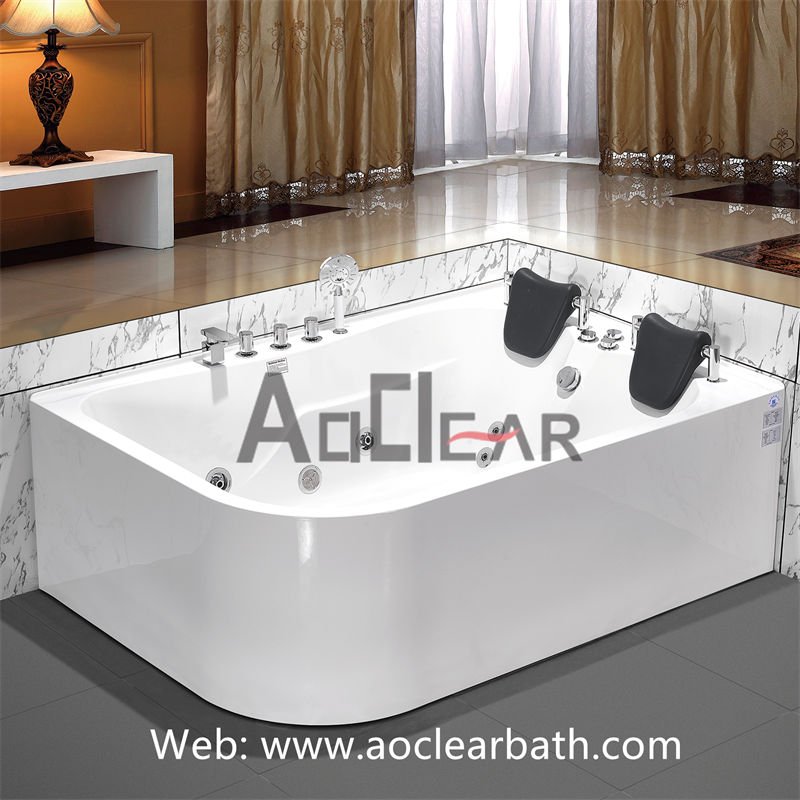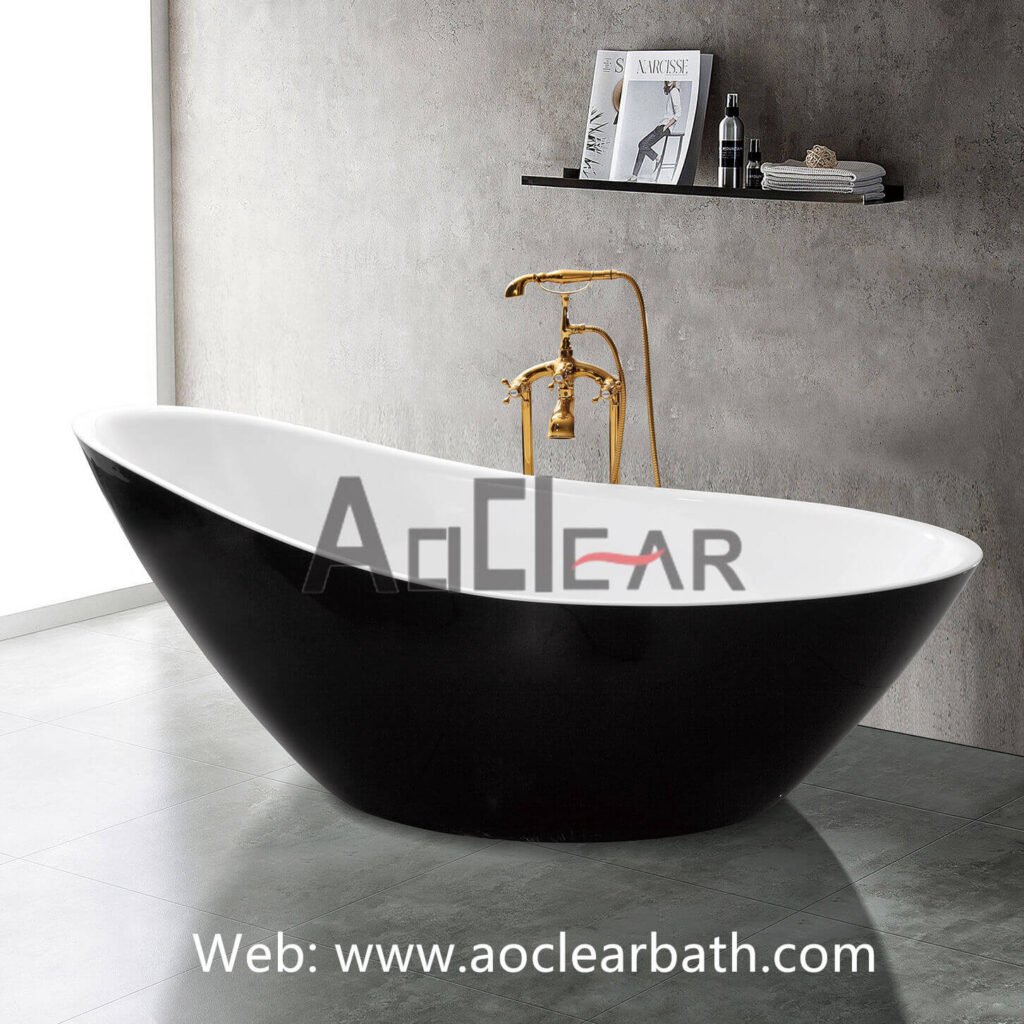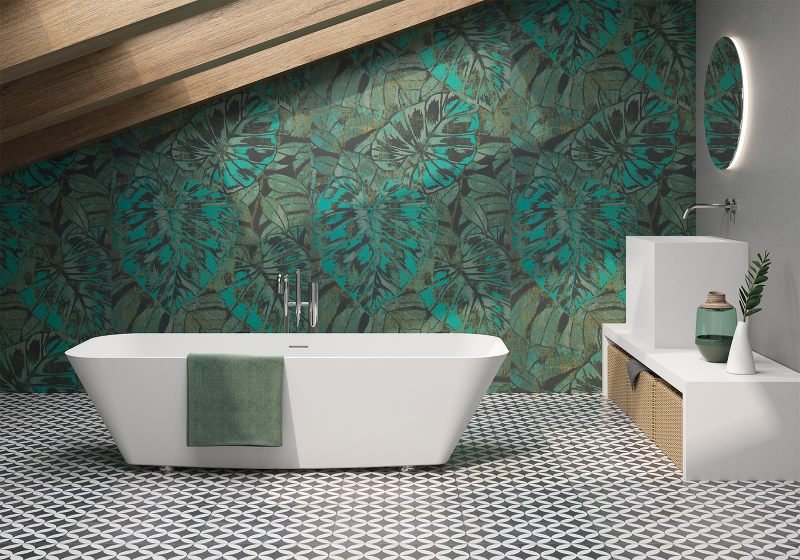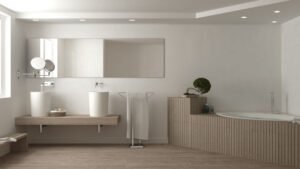You might want to learn what people often choose for material, design, and even size before purchasing a bathtub. Of course, tub size is equally as crucial as other tub features!
Most people buy standard sizes. These sizes often feature proportions in the medium range, making them the optimum size – not too small or too large. Each conventional measurement varies by bathtub, but it should be roughly 60 inches long and 30 inches wide.
Due to their design, some tubs are usually more oversized and have more depth than others. Continue reading to learn more!
Preferred Bathtub Sizes

The sizes of each bathtub may differ from each manufacturer; the length of a “standard” size of one manufacturer may be shorter or longer compared to another manufacturer. So there is no universal measurement for standard tubs, but there are common measurements you could find.
The basic sizes apply to bathtubs – small, medium, and large. But many people prefer what they call “standard tubs”. These standard sizes are around 60” in length and 30” to 32” in width.
Not all kinds of bathtubs in their standard size will have the exact dimensions, but most tubs with a similar shape to a rectangle would be around that.
Standard sizes are also known as medium sizes. People prefer these sizes because they are between small and large dimensions. Most medium tubs leave some room for the feet of people 5’4 and under and just fit for people 5’8 in height so they can still stretch their legs entirely.
It is understandable why people choose tubs with standard dimensions; aside from the space it gives, it is also the one commonly available.
Bathtubs come in several designs, some of which are mounted to a wall and some are not. Each design is unique in form, size, and shape; they can have a rectangular, oval, or irregular shape.
Before going to the standard sizes of each tub, we will first go through the different measurements of a bathtub.
Overall Length – The total length is the longest part of the tub, measuring from end to end.
Overall Width – This is the widest part of the tub, including the outside walls. For other tubs that have a non-rectangular shape, the width is the widest part of the design.
Overall Height – The measurement for the overall height spans from the base of the tub up to its rim. For clawfoot tubs, the measuring includes the length of the legs.
Basin Length – The basin length is the longest part inside the tub. Other tubs are angled and do not have straight sides, which gives the tub different measurements for the bottom and top part of the basin; the bottom may have shorter lengths than the top.
Basin Width – The basin width is the widest point inside the tub. It is usually measured in the center of the tub for most designs.
Basin Depth – This is the depth inside the tub from the basin’s bottom to the rim.
Soaking Depth – The distance from the basin’s bottom to the overflow drain corresponds to the soaking depth, which is substantially shorter than the basin’s depth.
Weight and Basin Capacity – Aside from the primary dimensions of length, width, and depth, you should also consider the heaviness of the bathtub. The tub’s weight affects how much water it can hold. It will also determine if you need to build better floor support.
Measuring a rectangular tub is more straightforward than other designs, such as oval or corner tubs. You can also check or ask for the specification details of the tub you want to purchase in case you want to be sure.
Standard Sizes of Each Bathtub Type
To give you a guide, I have listed some measurements of some of the most common dimensions you could find for each tub below.
Freestanding Bathtub
These stand-alone tubs can be placed anywhere in your bathroom. Because they are deeper than standard tubs, they are also known as soaking tubs.
This tub type is typically 60” x 30” x 30” in length, width, and height, respectively. Other measurements can be 50” to 72” long, 24” to 32” wide, and 24” to 30” tall.
Oval-shaped freestanding tubs differ from rectangular ones in a few ways. They are wider as a result of their shape. Typically, oval tubs are 60 x 42 x 24 inches.
Walk-in Bathtub
A walk-in tub has a side entrance and a built-in seat where you may relax comfortably, making it ideal for the elderly or persons with mobility concerns.
They are often higher than regular tubs, immersing your entire body thoroughly. Standard sizes with dimensions of 60” x 30” x 38” are available. There are other sizes that are 40” in length and 28” to 36” in width.
Corner Bathtub
Corner tubs do not have the traditional rectangular shape of tubs. You can often see them in the form of a diamond or something similar.
Because these tubs come in various sizes and shapes, determining the length and width might be difficult. However, because many manufacturers adhere to a standard size, you can buy it in 60” x 60” x 20” dimensions.
You can find smaller corner tubs in a 48” x 48” x 18” measurement, while larger models can come in 72” x 72” x 20”.
Alcove Bathtub
This tub is installed in a recessed part of your bathroom, enclosing it between three walls. Compared to a freestanding tub, you can only install an alcove tub in a specific spot.
Alcove bathtubs are commonly available in 60” x 32” x 18”. Small and large sizes can range from 50” to 72” in length, 30” to 32” in width, and 15” to 20” in height.
Drop-in Bathtub
You may confuse drop-in tubs with alcove tubs, which is understandable given that both usually position against a wall. The only difference is that drop-in tubs are shell tubs housed in enclosures.
It has a standard 60” x 32” x 18” measurement. You can also find these in sizes varying from 50” to 72” in length, 30” to 32” in width, and 15” to 20” in height.
Undermount Bathtub
Undermount tubs resemble alcove and drop-in tubs. But in this bathtub style, the deck surface conceals the tub’s rim. These tubs may look cleaner and more modern.
Undermount bathtubs share the exact standard dimensions and size range as alcove and drop-in tubs.
To make things easier, here is a table summarizing the standard dimensions of bathtubs we have just talked about:
| Type of Bathtub | Standard Dimensions (Length x Width x Height) |
| Freestanding Tub | 60″ x 30″ x 23″ |
| Oval Freestanding Tub | 60″ x 31″ x 24″ |
| Walk-in Tub | 60″ x 30″ x 38″ |
| Corner Tub | 60″ x 60″ x 23″ |
| Alcove Tub | 60″ x 32″ x 21″‘ |
| Drop-in Tub | 60″ x 32″ x 16″ |
| Undermount Tub | 60″ x 32″ x 16″ |
Each bathtub design has different dimensions, although their length and width are similar to the typical sizes specified. You can also observe that the depth of each tub varies depending on its function.
How to Choose Your Size

Finding the right size is the same as choosing the kind of bathtub you want. This step is essential as it is also part of the planning for the installation process.
- Measure the area intended for your bathtub installation. This area will limit the size of tub you can purchase. Consider alcove tubs for smaller spaces and freestanding tubs for larger rooms. Also, know where the plumbing will be if you install a new bathtub.
- Before purchasing a tub, measure the outer dimensions, including the tub’s base and top surface. This way, you can ensure that the bathroom space and bathtub are compatible. These dimensions will also determine if the tub will fit in the door from which it will enter.
Below is a video of how to measure wall-mounted tubs:
- Make careful to measure the bathtub from end to end for the fitting. Measure the depth and interior length when you want to know how comfy you will be inside your tub.
- For alcove and drop-ins that will fit in a wall or structure, you need to estimate and add an extra inch to the part where you will put the tub against the wall.
You must be cautious when measuring and examining any hidden areas you do not want to miss. Bathtubs have specification sheets that will give you more information. You should also consider your budget, especially if you wish for more oversized tubs.
If you are all set with your measurements, go ahead with your installation!
Takeaway
Manufacturers don’t follow a single measurement for all tubs, but there are specific measurements followed by many. In the end, these measurements become common.
It’s better to look at all options before choosing your final bathtub, so you will have a better idea of what you want.




